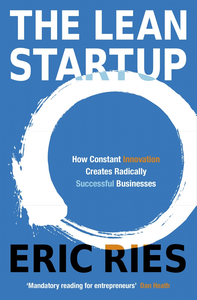Book Review: The Lean Startup
Posted on
With the sale of ProfitTrain complete, my schedule has room for a new project. There’s a handful of ideas I’m working through, but, before I jump into one, I think that now is a great opportunity to catch up with some business books I’ve had on my radar.
The Lean Startup, written by Eric Ries, is a book I first received from New Relic through some promotion. Sadly, I wasn’t in much of a reading phase at the time, but with a secondary recommendation the other day, I decided to go ahead and start reading.
First, the book defines an entrepreneur as:
an organization dedicated to creating something new under conditions of extreme uncertainty.
Using this definition, Eric explains that you can find entrepreneurs everywhere, from the typical garage startup to a division inside a larger corporation that’s been told to start a new initiative or project.
Some might say that we live in a golden age of entrepreneurship, but, while the overall number of new startups is increasing, success continues to be a real challenge. Lots of startups are failing because of elements that can actually be avoided. The Lean Startup is a movement that challenges entrepreneurs to work less on instinct on more on measurement in order to quickly learn what it takes to build a sustainable business.
Too often product ideas will come to a team and they’ll enter a long development cycle, only to find out that they’ve spent all their money and built something they can’t sell or that nobody wants. The Lean Startup encourages building “Minimum Viable Products” which will help start a real feedback loop with customers as soon as possible. Only by working with real customers can you truly learn.
Learning is an important, if not the most important, aspect for the Lean Startup movement. It should be at the center of how you spend all your time. If you are working on something that is not going to help you learn about customer behavior or evaluate a company risk, it’s probably just waste.
The heartbeat of a Lean Startup is the feedback loop, named “Build-Measure-Learn.” In practice, your actual feedback loop might look something like this:
- Figure out what you want to learn about your customers.
- Figure out how you’ll measure it.
- Build it into the product.
- Deploy it to the customers.
- Measure customer behavior.
- Use these measurements and metrics to define future work and pivots.
- Repeat.
The feedback loop should be as small as possible.
When it comes to metrics, Lean Startup does warn against “vanity metrics” — these might be reports or charts that look good at first glance but don’t really represent whether your business is really growing. Consider an app that gets 1,000 downloads per day but also has a bounce rate of 80%. What if that remaining 20% decays over time to leave you with only a handful of active users. Showing a “Total Downloads” chart might make the team feel nice inside, but does this represent the real growth rate of the product? What you need to track will vary per business model, but the recommendation to be wary of “vanity metrics” is true for all.
There is more advice in the book, including some suggestions on using “Five Whys” to help find root causes of problems, along with a reminder than no system is perfect for everyone. That said, I really took a liking to the ideas of Lean Startup. I’m currently reading a nice followup book, Running Lean, which has a collection of real world approaches to applying Lean Startup to a business or product prospect.
Regardless of what my next project may be, I’m definitely interested in applying The Lean Startup to see how it works out.
To learn more, you can check out the book’s website: theleanstartup.com.
